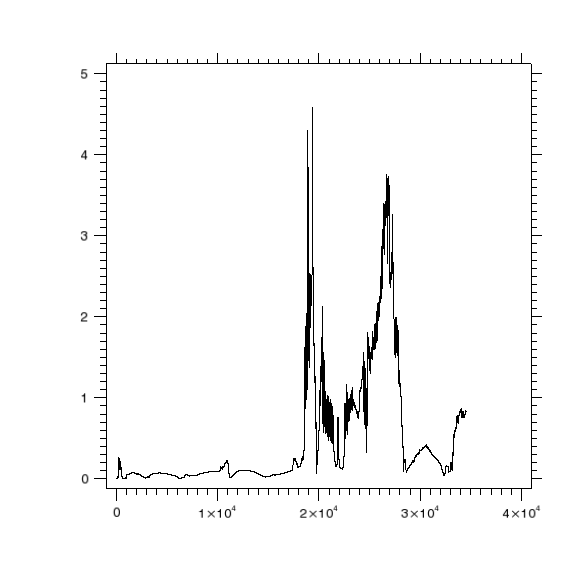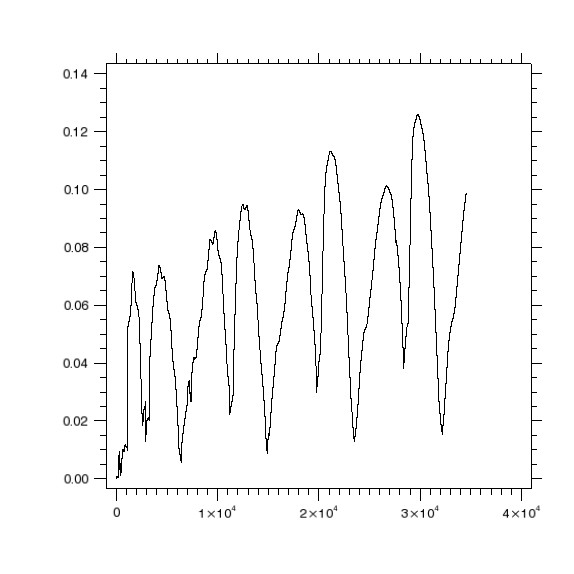m.hadfield wrote:You're right.
Perhaps I spoke too soon.
The inlet_test case, as implemented in the ROMS test suite
https://www.myroms.org/svn/src/test/inlet_test/
(with preprocessor options determined by a combination of build.bash and inlet_test.h) is characterised by large values of Cw at grid point (43,35,7) beginning at around 18500 time steps:

- Cw_inlet_test_nearshore_mellor_05.png (9.49 KiB) Viewed 26301 times
This leads (I think) to a tendency to blow up with large negative temperatures in this area. Whether or not the blow-up actually occurs is affected by changes in the compiler, the compiler options, the viscosity formulation and the viscosity values, but the high Cw values are there on every run.
When the inlet_test case is compiled using the source code on the trunk, with preprocessor options determined by the standard configuration file
https://www.myroms.org/svn/src/trunk/RO ... let_test.h
and run with the same input files it does not develop large Cw values and it does not blow up (in the tests I've run so far). Here is the plot of Cw

- Cw_inlet_test_nearshore_mellor_08.png (14.38 KiB) Viewed 26301 times
Examining the output in the two case shows that the only difference in preprocessor options is in the nearshore radiation stress formulation (as you may have guessed from the names I've given those graphics files). In the test branch this is NEARSHORE_MELLOR05 and in the trunk it is NEARSHORE_MELLOR08. I'm not familiar with these parameterisations (I haven't read either of the papers yet) but I am tempted to conclude that NEARSHORE_MELLOR08 is more stable.